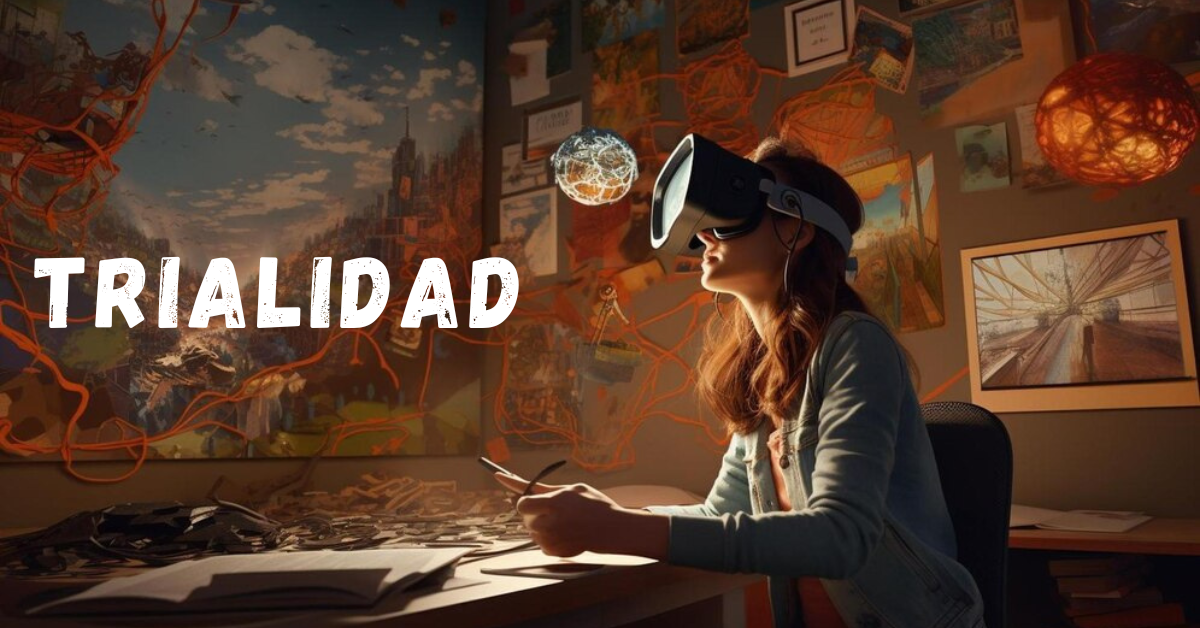Topic
Understanding Trialidad and Its Multifaceted Implications

Have you ever heard of the term trialidad and wondered what it means? In a world where duality often dominates our thinking, trialidad introduces a fascinating third dimension to our understanding. This concept has gained importance in various fields, influencing everything from philosophy to art. So, what exactly is trialidad, and why should we care about it?
Understanding Trialidad
Trialidad is derived from the Spanish word trinidad, which means trinity. It signifies a three-part structure or relationship, breaking away from the conventional dualistic approach that often limits our perspective. While the concept isn’t entirely new, its application in modern contexts brings fresh insights and possibilities. At its core, trialidad emphasizes the interplay between three distinct yet interconnected elements. This triadic structure can be seen in various systems and theories, offering a more nuanced and comprehensive understanding of complex phenomena.
Historical Context of Trialidad
The roots of trialidad can be traced back to ancient civilizations, where trinities were commonly represented in religious and mythological contexts. From the Holy Trinity in Christianity to the Trimurti in Hinduism, the idea of three interconnected entities has long been a powerful symbol. As societies evolved, so did the interpretation and application of trialidad. Philosophers, artists, and scientists have all contributed to its development, each adding layers of meaning and relevance.
Trialidad in Philosophy
In philosophy, trialidad challenges the traditional dualistic thinking that often simplifies complex issues into binary opposites. Philosophers like Hegel and Peirce have explored triadic structures in their work, arguing that a three-part framework can better capture the dynamics of reality. Hegel’s dialectics, for instance, involve a triadic process of thesis, antithesis, and synthesis, highlighting the transformative power of integrating opposing ideas. Similarly, Charles Sanders Peirce’s semiotics is based on a triadic relationship between the sign, its object, and its interpretant.
Trialidad in Psychology
In psychology, trialidad can be seen in various models that incorporate a third element to explain human behavior and cognition. The id, ego, and superego in Freud’s psychoanalytic theory, for example, represent different aspects of the psyche that interact in complex ways. By considering a triadic model, psychologists can gain deeper insights into the intricacies of human behavior, moving beyond the simplistic binary oppositions that often limit our understanding.
Trialidad in Sociology
Sociologists have also found value in the concept of trialidad, particularly in analyzing social structures and interactions. The interplay between individual, society, and environment, for instance, offers a more holistic view of social dynamics. Trialidad helps to illuminate the multifaceted nature of social relationships, revealing how different elements influence and shape each other in a continuous process of interaction and change.
Cultural Significance of Trialidad
Various cultures have embraced trialidad in their own unique ways. In Chinese philosophy, the concept of Three Pure Ones represents the three highest deities in Taoism, each embodying different aspects of the divine. These cultural expressions of trialidad highlight its universal appeal and relevance, demonstrating how different societies have used triadic structures to make sense of the world.
Trialidad in Literature
In literature, trialidad can be found in the narrative structures and thematic explorations of many works. Stories that involve love triangles, for instance, utilize a triadic relationship to create tension and depth. Notable texts like James Joyce’s Ulysses and Gabriel Garcia Marquez’s One Hundred Years of Solitude incorporate triadic elements to enrich their storytelling, offering readers a more complex and layered experience.
Trialidad in Art
Visual artists have also been drawn to trialidad, using it to create compelling compositions and convey deeper meanings. The use of three colors, shapes, or figures can create a sense of balance and harmony. Artists like Wassily Kandinsky and Piet Mondrian have explored triadic structures in their work, pushing the boundaries of artistic expression and challenging viewers to see beyond the surface.
Modern Applications of Trialidad
In today’s world, trialidad finds applications in various fields, from technology to organizational management. The idea of balancing three elements—such as people, processes, and technology—can lead to more effective and sustainable solutions. In the realm of technology, trialidad can be seen in the development of triadic algorithms and systems that incorporate multiple perspectives and dimensions, enhancing functionality and performance.
Trialidad in Education
Educational systems can also benefit from the concept of trialidad, particularly in designing curricula that balance knowledge, skills, and attitudes. This triadic approach can lead to more holistic and effective learning experiences. While incorporating trialidad into education offers numerous benefits, it also presents challenges, such as the need for teachers to adapt to new methods and frameworks. However, the potential for deeper, more comprehensive learning makes it a worthwhile pursuit.
Ethical Considerations
As with any powerful concept, trialidad raises ethical questions. How do we ensure that all three elements in a triadic relationship are given equal consideration? What are the potential risks of oversimplifying complex issues into triadic structures? Addressing these ethical dilemmas requires careful consideration and a commitment to balance the benefits and risks, ensuring that trialidad is used responsibly and effectively.
Future of Trialidad
Looking ahead, trialidad is likely to continue evolving, with new applications and interpretations emerging in various fields. As our understanding of complex systems grows, so too will the relevance of triadic structures. In the future, trialidad could play a crucial role in addressing global challenges, from climate change to social inequality, by offering a more nuanced and integrative approach to problem-solving.
Conclusion
Trialidad offers a fascinating and powerful framework for understanding the world. By moving beyond binary thinking and embracing a triadic approach, we can gain deeper insights into complex phenomena and develop more holistic and effective solutions. Whether in philosophy, psychology, sociology, or the arts, trialidad enriches our understanding and opens up new possibilities for exploration and innovation.
FAQs
What is trialidad?
Trialidad is a concept that emphasizes a three-part structure or relationship, moving beyond the conventional dualistic approach to offer a more nuanced understanding of complex phenomena.
How does trialidad differ from duality?
While duality focuses on binary opposites, trialidad introduces a third element, creating a triadic relationship that offers a more comprehensive and dynamic perspective.
Can trialidad be applied in everyday life?
Yes, trialidad can be applied in various aspects of everyday life, from personal relationships to professional settings, by encouraging a more balanced and nuanced approach to problem-solving and decision-making.
What are the criticisms of trialidad?
Some critics argue that trialidad can oversimplify complex issues by forcing them into a triadic framework. Others believe that it may not be universally applicable across all fields and contexts. However, proponents argue that trialidad offers valuable insights and can complement other approaches.
How can one study trialidad further?
To study trialidad further, one can explore works by philosophers, psychologists, and sociologists who have contributed to the development of the concept. Engaging with literature, art, and cultural studies that incorporate triadic structures can also provide deeper insights into the applications and implications of trialidad.

Topic
The Intriguing Alicia Case Atlanta

The Alicia case in Atlanta has captured widespread attention, not only within the local community but also across the nation. This case is significant due to its complex nature and the various elements involved. In this article, we will delve into the details of the Alicia case, exploring its background, developments, and impact.
Background Information Alicia Case Atlanta
Alicia, a resident of Atlanta, found herself at the center of a legal storm following an unexpected incident. Details about Alicia and the initial events that triggered the case are crucial to understanding the full narrative. Alicia was known for her active involvement in community initiatives, which made the subsequent events even more shocking.
Timeline of Events
The Alicia case unfolded over several months, with key dates marking significant developments. From the initial incident to the current status, each event played a pivotal role in shaping the trajectory of the case. A clear timeline helps to piece together how the situation evolved.
Investigation Process
Law enforcement agencies played a critical role in investigating the Alicia case. The process involved meticulous evidence gathering and analysis. Understanding how the investigation was conducted provides insight into the thoroughness and challenges faced by the authorities.
Key Players
Several individuals were involved in the Alicia case, each contributing to its progression. These included Alicia herself, law enforcement officers, legal teams, and other stakeholders. The roles and actions of these key players significantly influenced the case’s outcome.
Media Coverage
Media coverage of the Alicia case was extensive, with various outlets reporting on different aspects. The way the media portrayed the case affected public perception and contributed to the overall narrative. Analyzing the media’s role helps to understand the case’s broader impact.
Legal Proceedings
The Alicia case went through multiple court hearings and trials. Each stage of the legal proceedings brought new developments, with major rulings and decisions shaping the case’s direction. A detailed look at these proceedings highlights the legal intricacies involved.
Challenges and Controversies
Throughout its course, the Alicia case faced numerous challenges and controversies. These issues ranged from procedural hurdles to public disputes. Identifying these challenges provides a clearer picture of the complexities involved.
Impact on the Community
The Alicia case had a profound impact on the Atlanta community. From initial reactions to long-term effects, the case influenced public opinion and community dynamics. Understanding this impact sheds light on the case’s significance beyond the courtroom.
Lessons Learned
Several lessons emerged from the Alicia case, offering insights into law enforcement, legal practices, and community relations. These lessons have the potential to influence future cases and policies, highlighting the broader implications of Alicia’s story.
Current Status
As of now, the Alicia case continues to evolve. Current developments and the case’s status provide an update on where things stand. Ongoing aspects of the case keep it relevant and important to follow.
Comparisons to Similar Cases
Comparing the Alicia case to other notable cases in Atlanta offers a comparative perspective. Identifying similarities and differences helps to contextualize Alicia’s case within a broader legal and social framework.
Expert Opinions
Legal experts have weighed in on the Alicia case, offering analysis and predictions. These expert opinions add depth to the understanding of the case and its potential future implications.
Public Opinion
Public sentiment towards the Alicia case has varied, reflecting a range of perspectives. The influence of the case on public trust in the legal system is a critical aspect to consider, highlighting its societal impact.
Conclusion
In conclusion, the Alicia case in Atlanta is a multifaceted legal matter with significant implications. From its complex background to its ongoing developments, the case continues to capture attention. By understanding the key elements and lessons learned, we gain a comprehensive view of its importance and impact.
FAQs
What is the Alicia case about?
The Alicia case involves a legal matter that gained significant attention in Atlanta due to its complexity and the individuals involved.
Who is Alicia?
Alicia is a resident of Atlanta known for her community involvement, who became central to this legal case following an unexpected incident.
What were the key developments in the case?
The case saw several key developments, including multiple court hearings, significant rulings, and ongoing legal proceedings.
How did the community react to the case?
The community had varied reactions, with the case impacting public opinion and community dynamics significantly.
What lessons were learned from the Alicia case?
The case highlighted important lessons in law enforcement practices, legal procedures, and community relations, offering insights for future cases.
Topic
Clochant: A Comprehensive Exploration

Clochant, a term often shrouded in mystery and intrigue, refers to a type of architectural structure traditionally associated with religious and cultural significance. These towering edifices are not only marvels of construction but also serve as historical beacons, guiding us through the annals of time. In this comprehensive exploration, we delve into the world of Clochants, uncovering their history, architectural brilliance, and cultural importance.
Historical Background
The origins of Clochant can be traced back to ancient times, where they were primarily constructed as bell towers attached to churches and other significant buildings. Over the centuries, the design and purpose of Clochants have evolved, adapting to changing architectural styles and societal needs. From their humble beginnings as simple stone towers to the elaborate structures we see today, Clochants have stood the test of time, each one telling a unique story of its own.
Architectural Characteristics
One of the defining features of Clochants is their architectural design. Typically, these structures are characterized by their tall, slender form, often adorned with intricate carvings and elaborate facades. The use of arches, columns, and decorative stonework adds to their grandeur, making them stand out as iconic landmarks. Notable examples of Clochants include the Leaning Tower of Pisa in Italy and the bell tower of Saint Mark’s Basilica in Venice.
Cultural Significance
Clochants hold a special place in the cultural fabric of many societies. They are often seen as symbols of religious devotion and community pride. The sound of bells ringing from a Clochant is a call to gather, to celebrate, and to reflect. These structures are not just buildings; they are custodians of tradition and heritage, playing a crucial role in religious ceremonies and community events.
Famous Clochants Around the World
Clochants are scattered across the globe, each with its own unique charm and history. In Europe, the Campanile of Florence and the belfry of Bruges are prime examples of Clochant architecture. Beyond Europe, notable Clochants can be found in places like the Moscow Kremlin in Russia and the pagoda bell towers of East Asia. Each of these structures offers a glimpse into the architectural and cultural diversity that Clochants represent.
Construction Techniques
The construction of Clochants requires a blend of traditional craftsmanship and modern engineering. Historically, these structures were built using locally sourced materials and manual labor, with techniques passed down through generations. In contemporary times, advancements in construction technology have allowed for more durable and sustainable Clochants, ensuring that these historical treasures are preserved for future generations.
Materials Used in Clochant Construction
The materials used in the construction of Clochants have evolved over time. Traditional Clochants were primarily built using stone and wood, materials that were readily available and could withstand the test of time. Today, innovations in materials, such as reinforced concrete and steel, have allowed for greater flexibility in design and construction, enabling the creation of Clochants that are both resilient and aesthetically pleasing.
Restoration and Preservation
Preserving the historical integrity of Clochants is of utmost importance. Restoration projects are often undertaken to repair damage caused by weathering, pollution, and other environmental factors. Notable restoration efforts include the ongoing work on the Leaning Tower of Pisa and the bell towers of Venice, which aim to restore these iconic structures to their former glory while ensuring their stability and safety.
Tourism and Economic Impact
Clochants are major attractions for tourists, drawing visitors from around the world who are eager to experience their architectural beauty and historical significance. The influx of tourists contributes significantly to local economies, supporting businesses and creating jobs. The economic impact of Clochants extends beyond tourism, as they also play a role in cultural preservation and community development.
Community Engagement
Local communities play a vital role in the upkeep and promotion of Clochants. Community engagement initiatives, such as educational programs and workshops, help raise awareness about the importance of these structures and encourage active participation in their preservation. By involving local residents in Clochant-related activities, a sense of ownership and pride is fostered, ensuring that these historical treasures are cherished and maintained.
Religious Ceremonies and Events
Clochants are central to many religious ceremonies and events. They serve as the venue for services such as weddings, baptisms, and funerals, marking significant milestones in the lives of community members. The ringing of bells from a Clochant is a powerful symbol, signaling moments of joy, reflection, and remembrance. Major events, such as Easter and Christmas services, often see Clochants adorned with decorations and filled with the sound of jubilant bells.
Challenges Facing Clochants
Despite their historical and cultural importance, Clochants face several challenges. Environmental threats, such as climate change and natural disasters, pose significant risks to these structures. Additionally, funding and maintenance issues can hinder restoration efforts and jeopardize the long-term preservation of Clochants. Addressing these challenges requires a concerted effort from governments, communities, and preservation organizations.
Innovative Uses of Clochants
In an effort to keep Clochants relevant in modern times, many have been adapted for innovative uses. Some Clochants have been transformed into museums, offering visitors a chance to learn about their history and significance. Others have been repurposed as community centers, hosting events and activities that bring people together. These multi-functional spaces ensure that Clochants continue to serve as valuable assets to their communities.
Future Prospects
The future of Clochants looks promising, with numerous projects and initiatives aimed at preserving and promoting these structures. Plans include expanding educational programs, enhancing visitor facilities, and exploring new ways to integrate Clochants into the community. By embracing both tradition and innovation, the future of Clochants is bright, ensuring that these historical treasures continue to inspire and captivate for generations to come.
Conclusion
Clochant is not just an architectural term; it is a symbol of history, culture, and community. From their impressive designs to their significant roles in religious and social contexts, Clochants are treasures worth preserving. By visiting, supporting, and participating in the activities surrounding Clochants, we contribute to the ongoing story of these remarkable structures. Whether you’re drawn by their beauty, history, or cultural significance, a journey into the world of Clochants is sure to be a rewarding experience.
FAQs
What is a Clochant?
A Clochant is a type of architectural structure, typically a bell tower, associated with religious and cultural significance.
Where can I find famous Clochants?
Famous Clochants can be found around the world, with notable examples in Europe, Asia, and beyond.
How are Clochants maintained?
Clochants are maintained through restoration projects, community involvement, and funding from various sources.
Can Clochants be visited by tourists?
Yes, many Clochants are open to tourists and offer guided tours and educational programs.
What makes Clochants unique?
Clochants are unique due to their architectural design, historical significance, and cultural importance.
Topic
Hope Park & Martyrs Church: A Historical Gem

Hope Park & Martyrs Church stands as a testament to history, culture, and community. Nestled in a serene park, this church is not just a place of worship but a beacon of resilience and a repository of rich heritage. Whether you’re a history buff, an architecture enthusiast, or someone seeking solace, Hope Park & Martyrs Church offers something unique for everyone.
History of Hope Park & Martyrs Church
The origins of Hope Park & Martyrs Church date back to the early 19th century, when the need for a new place of worship was recognized by the local community. Founded in 1820, the church quickly became a focal point for religious and social gatherings. Over the years, it has witnessed numerous significant events, from community milestones to historical upheavals, making it a cornerstone of local heritage.
Architectural Significance
Designed in the Gothic Revival style, Hope Park & Martyrs Church is a masterpiece of architectural elegance. The intricate stonework, soaring spires, and stunning stained glass windows are the handiwork of renowned architects of the time. Each element of the church’s design tells a story, reflecting the craftsmanship and artistic vision of its creators.
Cultural Impact
Beyond its architectural beauty, Hope Park & Martyrs Church has played a pivotal role in the cultural life of the community. It has hosted countless cultural events, from musical performances to art exhibitions, fostering a sense of unity and belonging among locals. The church is a cultural hub, where traditions are celebrated, and new memories are created.
The Martyrs of Hope Park
The church’s name honors the martyrs who sacrificed their lives for their faith and community. These individuals, remembered for their courage and conviction, have left an indelible mark on the church’s history. Their stories of bravery and resilience continue to inspire and remind us of the enduring power of faith and sacrifice.
Restoration Efforts
Over the years, Hope Park & Martyrs Church has undergone several restoration projects to preserve its historical and architectural integrity. From repairing the ancient stonework to restoring the magnificent stained-glass windows, these efforts ensure that the church remains a beacon of heritage for future generations. Current plans include further enhancements to the church’s infrastructure and accessibility.
Visitor Experience
Visitors to Hope Park & Martyrs Church can expect a deeply enriching experience. The church offers guided tours that delve into its history, architecture, and cultural significance. Educational programs are available for those eager to learn more about the church’s past and its role in the community. The serene surroundings of Hope Park provide a perfect backdrop for reflection and exploration.
Community Engagement
The church is deeply embedded in the fabric of the local community. It hosts numerous events that bring people together, from seasonal festivals to charity drives. Volunteer opportunities abound, allowing community members to contribute to the church’s upkeep and initiatives. The church’s active involvement in local events fosters a strong sense of community spirit.
Religious Services
Hope Park & Martyrs Church offers a variety of religious services that cater to diverse spiritual needs. Regular worship services are complemented by special events such as baptisms, weddings, and memorial services. The church’s inclusive approach ensures that everyone feels welcome and valued.
Educational Programs
Education is a cornerstone of the church’s mission. Workshops, seminars, and collaborative programs with local schools provide valuable learning opportunities for people of all ages. These programs are designed to deepen understanding of the church’s history, architecture, and cultural significance.
Special Events and Celebrations
The church is a popular venue for special events and celebrations. Annual events such as the Christmas and Easter services draw large crowds, while the church’s beautiful setting makes it a sought-after location for weddings and private events. Each celebration at Hope Park & Martyrs Church is infused with a sense of tradition and community.
Hope Park Gardens
Adjacent to the church are the beautifully maintained Hope Park Gardens. These gardens are home to a variety of flora and fauna, offering a tranquil retreat for visitors. The gardens are an integral part of the church’s appeal, providing a serene environment for reflection and relaxation.
Supporting the Church
Hope Park & Martyrs Church relies on the generosity of its supporters to continue its mission. Donations and fundraising efforts play a crucial role in maintaining the church and funding its various programs. There are many ways for the community to help, from financial contributions to volunteering time and skills.
Prospects
The future of Hope Park & Martyrs Church looks bright, with numerous projects and initiatives on the horizon. Plans include expanding educational programs, enhancing visitor facilities, and further preserving the church’s historical elements. The church’s vision for the future is rooted in its commitment to serving the community and preserving its rich heritage.
Conclusion
Hope Park & Martyrs Church is more than just a historical building; it is a living testament to the enduring power of faith, community, and resilience. Whether you’re drawn by its history, architecture, or spiritual offerings, a visit to this remarkable church is sure to leave a lasting impression. We encourage you to visit, support, and become a part of the ongoing story of Hope Park & Martyrs Church.
FAQs
What are the visiting hours?
The church is open to visitors from 9 AM to 5 PM, Monday through Saturday.
Is there an entrance fee?
No, visiting the church is free of charge, though donations are greatly appreciated.
Can I book a private event?
Yes, the church is available for private events such as weddings and baptisms. Please contact the church office for more details.
How can I volunteer?
There are numerous volunteer opportunities available. Interested individuals can sign up through the church’s website or contact the volunteer coordinator.
What makes Hope Park & Martyrs Church unique?
Its rich history, stunning architecture, and deep connection to the community make it a truly unique and special place.
-

 Technology7 months ago
Technology7 months agoExploring the Concept of Assumira: Understanding Its Impact and Applications great 2
-

 TECH7 months ago
TECH7 months agoUnlocking the Power of Mystop: Your Ultimate Navigation Companion great 9
-

 BUSINESS7 months ago
BUSINESS7 months agoExploring the World of Kääntäjäö: Bridging Language Gaps great 7
-

 Blog7 months ago
Blog7 months agoThe Hidden Strengths: 거만한 크랭키/작다고 무시하면 안 돼요 Don’t Underestimate the Small and Cranky
-

 Technology6 months ago
Technology6 months agoChainiste: Exploring a Revolutionary Blockchain Platform
-

 HOME7 months ago
HOME7 months agoNTR Share House: Redefining Community Living great 8
-

 Technology7 months ago
Technology7 months agoQXEFV Demystified: How to Harness its Power for Maximum Impact great 8
-

 Blog7 months ago
Blog7 months agoExploring the World of HD Hole